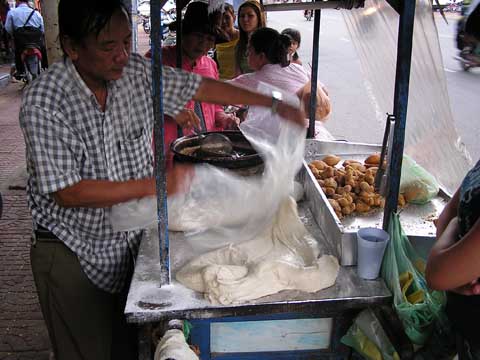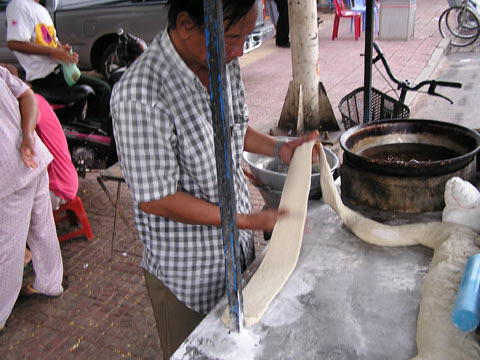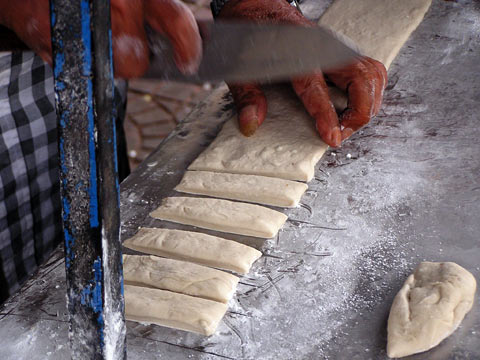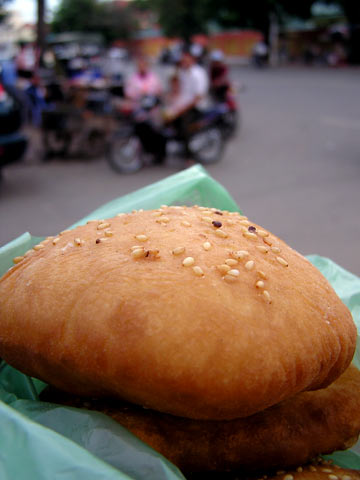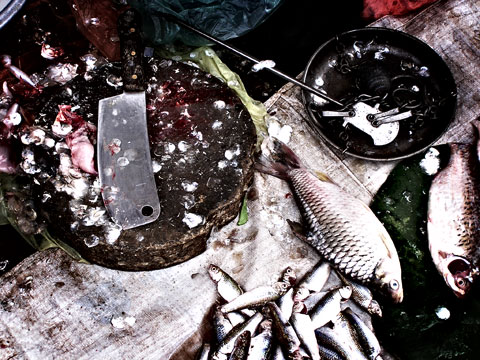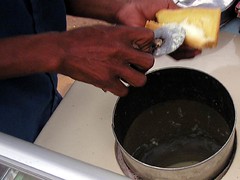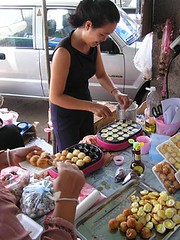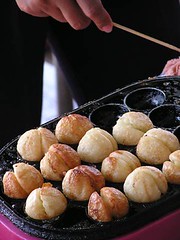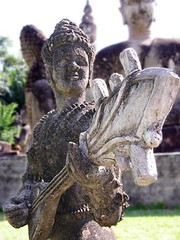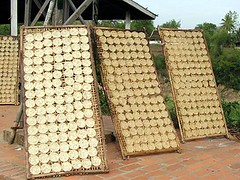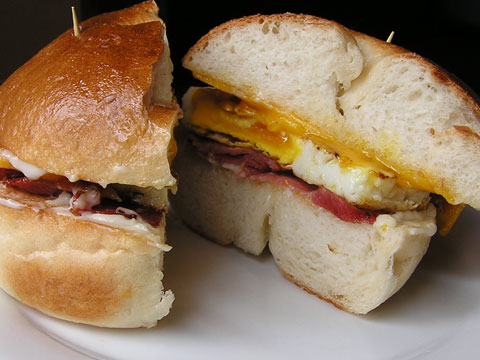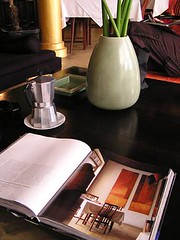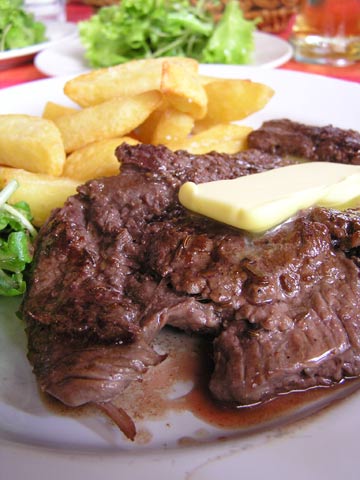At the second and penultimate New Year, I made a bold resolution to do a spot of interviewing about Cambodian food as an adjunct to simply rocking up to somebody’s stall and asking the vendor what they’re deep-frying today. I’ve also been enthused by Andy Brouwer’s new blog that profiles Cambodians from all walks of life.
The shining light in online Cambodian recipes is Khmer Krom Recipes. At the moment, there is no other English-language Khmer food resource as comprehensive: currently the site lists 561 recipes according to the site’s Khmer Krom expat owner, Mylinh Nakry Danh, not to mention spotter’s guides to Cambodian ingredients, fruit and vegetables.
Now living in the USA, Mylinh started the site as a way to “do something to keep our Khmer Krom culture alive and visible to the public. So much of our culture is take over or disappearing over time as our country was taken and given away to Vietnamese”. I’m all for mixing food and politics, and Kampuchea Krom/Cambodian border politics are some of the murkiest, emotive, and more dangerous of the identity politics locally available. Thanks to my extreme lack of knowledge of these affairs and this website being about Cambodian food, I stuck to asking occasionally torturous questions about Mylinh’s recipes by email.
Who taught you to cook? Who was the best cook in your family?
I learned how to cook from my parents, family and friends. My mom is very good cook but my dad is the best cook in my family. Sorry, mom.
Are there any ingredients that are impossible to find in America?
America is a big country, every state is different, and one state may carry more Asian food than other. I can only tell you that where I live it is hard to find Cambodian ingredients. For example, Cambodian sausage (made with beef), dried salty fish “ngiet trey tok”, pahok trey naing (pickle Asian catfish), and vegetables like fresh bamboo shoots, fresh Neem leaf, “Sadao”, just to name a few. Possibly living in a very large Cambodian community such as Long Beach, California or Lowell, Massachusetts, there would be more of these ingredients available.
Are there foods that you especially miss from Cambodia?
You’re torture me with this question because I miss so many foods from home.
I miss “num pong”, it is white fluffy coconut rice cake that steamed in bamboo stalk. It’s not too sweet and absolutely delicious. I miss “tirk tholk” the most, it is fresh palm juice, not only I miss “tirk tholk” I also miss seeing the elderly man carry heavy bamboo stalks that filled with delicious palm juice on his shoulder. I miss Kampuchea Krom.
Since being in America, do you think that your ideas about food have changed?
My answer: Yes, of course. Now that I am explored more on foods and flavors from all over the world and they are all very good. But I am always drawn back to the traditional foods of my childhood.
Are there any regional differences between recipes from Kampuchea Krom and those from elsewhere in Cambodia? Are there any regional specialties?
Yes, I think that happens everywhere in the world not just only Khmer in Kampuchea Krom and Khmer in Cambodia. “Salor machu” is sweet, sour soup in English. Some Khmer like their “salor machu” spicy hot, other like sweeter or sourer, some Khmer can’t cook with out MSG and some Khmer can’t live without ” pahok” (pickle fish). How do you cook rice? Some people like rice stick together so they add more water. Some people like their rice fluffy so they use less water, but no matter how you cook, its all cooked rice.
There are 21 provinces in Kampuchea Krom and each province has their specialties. For example: Mee Sar (My Tho) province has excellent noodle that made with mung bean. Kamourn Sor (Rach Gia) province is world renowned for seafood and Koh Tral (Phu Quoc) is land for fish sauce. Mott Chrouk (Chau Doc) province is known for Mam (fermented fish) and Pahok (pickle fish).
Do you have a favourite recipe from your website that I could share with my readers?
It’s difficult for me to pick just one out of 561 recipes that on my website because they are my favorite. However, I think your readers will enjoy Khmer Krom vegetarian spring roll.

